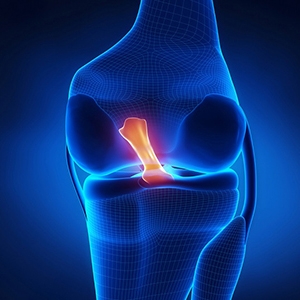ACL ruptures do not heal. Therefore, in order to return stability to the knee, ACL’s need to be reconstructed through surgery. Not everyone with an ACL injury is a candidate for reconstruction. Factors to be considered include the patient’s age, medical history, compliance, and activity goals. Talk about these things with your physician to see if the procedure is a fit for you.
What ACL reconstruction can do:
- Prevent further knee injury including meniscal and articular cartilage injuries.
- Restore mobility for those with an active lifestyle or job that requires pivoting/shifting/cutting.
- Facilitate return to high level sports.
What ACL reconstructions can NOT do:
- Prevent knee arthritis.
- May not completely eliminate knee pain.
There are two types of reconstruction, both of which we perform at Sterling Ridge Orthopaedics & Sports Medicine.
- The allograft is when tissue is harvested from a cadaver and sterilized for use. This procedure allows for less complications and the potential for faster recovery. The disadvantages to this procedure is a very low potential for disease transmission and possible delays in the graft incorporating with the patient’s tissue.
- Autograft is the second type of reconstruction where the tissue is taken from the patient using several different technique options. This procedure’s advantages include using the patient’s own tissue, reduced time for the graft to incorporate with the patient’s ligaments and less chance of rejection since the tissue is fresh. Disadvantages with this procedure include increased surgical time (due to taking the tissue from another part of the patient’s body), complications i.e.: If the hamstring tendons are harvested, there is potential for knee pain and loss of hamstring power.
With any surgery, there are potential complications. And although complications do occur, the rate is low for ACL reconstructions. Complications could include: decreased quadriceps strength, persistent knee pain, re-tearing of the graft, recurrent instability, graft or knee infection, blood clot, blood vessel or nerve injury, and stiffness.
ACL reconstruction requires extensive post-operative rehab. It is very important to work with a physical therapist after surgery to regain motion and strength. Normally, you will not be cleared to return to competitive sports for 6 months after surgery. At SROSM we offer on-site physical therapy and therefore can help you every step of the way.






